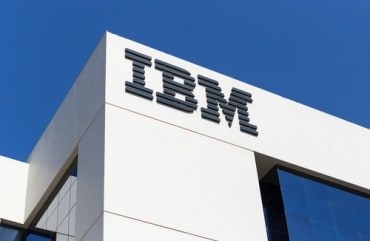
Edge is going through a revolution or evolution, enabled by more connectivity, even in really low-end devices, that makes much more data available.
Edge computing is the most essential element in Industry 4.0 initiatives, intended to connect – via software and data – manufacturing supply chains from raw materials to partners to customers. Perhaps the most stunning example of Industry 4.0 in action at this time is Tesla, which has upended the auto industry.
“Think of all of their cars driving around, communicating back to the manufacturer, how they’ve closed the loop on their own quality control,” says Mark Verheyen, chief engineer for embedded platforms at Eaton. “You don’t have to pull your car up to get it checked and then have that fed back to HQ that you need to tighten this screw a little bit more. That’s already closed all the way through.”
Verheyen’s goal is to bring that concept – closed-loop maintenance – to his own customers, he explained during a recent panel discussion on edge implementation opportunities and challenges. Verheyen, who works with real-time operating systems (RTOS) and Linux-based systems, works with his corporate product teams “to get their devices securely and securely connected, whether that’s through industrial protocol standard protocols whatever that is, or IoT related.”
Eaton provides and supports a range of connected products from residential light switches to grid control, featuring “every sort of gray box in between, every sort of electrical contact point,” he says. “We’re going through a revolution or evolution, enabling more of that connectivity, even in really low-end devices.”
See also: Edge Looms Ever Larger; As Do Investment Requirements
Gathering data to make this magic happen is both an opportunity and a challenge for the company. “It’s a wide range of struggles and different ranges of connectivity across that whole space,” Verheyen says. “We’re headed towards tying all of these things together, gathering up and combining data from the residential space, the enterprise space, and maybe the grid space.”
The most prominent use case for Eaton’s edge computing initiatives is monitoring and moderating energy usage, he says. “Our primary focus right now is reducing energy costs measuring carbon footprint, creating reports about a factory or a facility’s energy usage,” he explains. “This is the low-hanging fruit, taking the information that we already have and deriving new insights, new capabilities, or new information out of that. and giving the customers more options.”
As things progress, he says, “we’ll move further down into being more reactive to data. Getting into predictive analytics is the holy grail.”
The greatest challenge has been deploying across countless standards, he says. “A building management system uses a different system than the automation system and different than the energy management system. Our approach has been to try to aggregate them as much as we can, whether that’s through gateways or through embedding each one of those protocols. I think, and I hope that we will get to a point where at least you know first on the edge probably, on-prem, you know, where we’ll have unified namespaces for our data on the edge and on-prem, and figure out how to speak all these different protocols. We essentially have to be multilingual at the edge, and focus all that data into central places and then move that capability into the cloud.”
Eaton also is exploring further monetization of its data analytics services “and the capability of turning on and off features at the edge,” Verheyen says. “A simple example is as you plug in your car to charge, and you need to validate your credit card to turn it back on — that’s closing the loop. Now you kind of take that up the scale to other closed-loop systems.”







